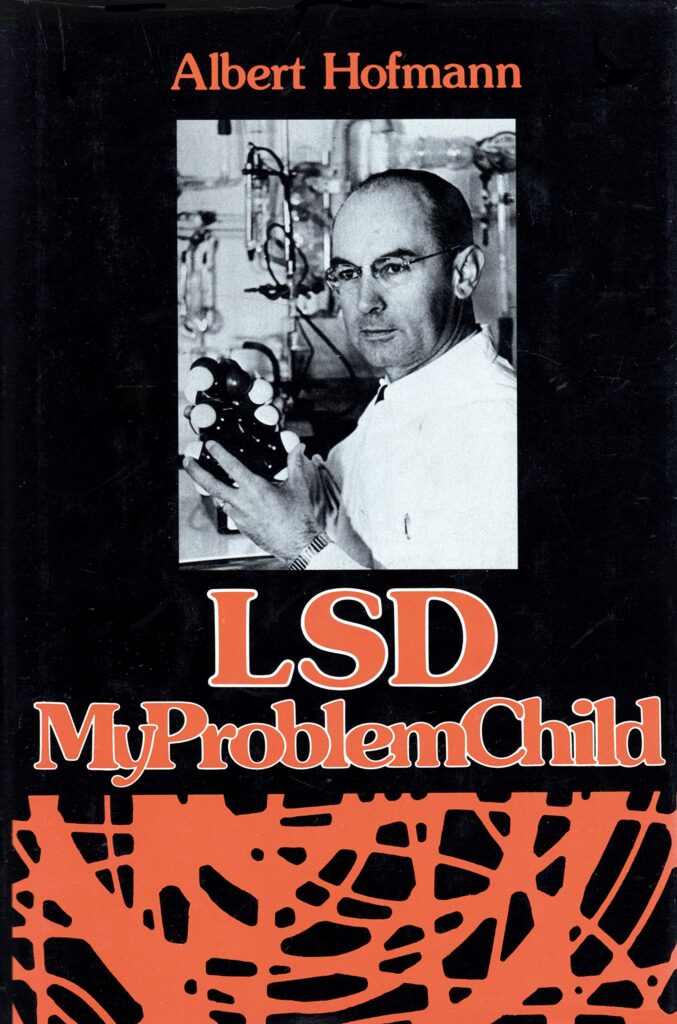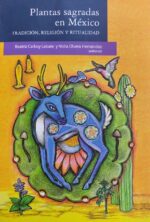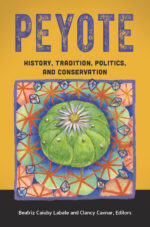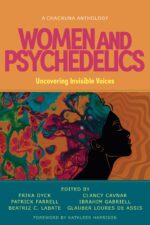- Introduction to Women and Psychedelics - July 26, 2024
- Global History of Psychedelics: A Chacruna Series - October 4, 2023
- Can Psychedelics Promote Social Justice and Change the World? - August 30, 2021

Susi Ramstein was the first woman to take LSD. She was also the first psychedelic guide. Despite these amazing firsts, very little has been written about her. She has been overshadowed by her more famous boss, Albert Hofmann, but Susi in fact had her own “bicycle trip” and made her own contributions to this history.
Hofmann’s Laboratory Assistant
Born in Switzerland in 1922, Susi was the daughter of an optometrist. She and her two brothers grew up in Basel, and as a teenager she went to finishing school in French Switzerland where she learned languages, deportment, etiquette, and housekeeping skills. Girls at this time were not routinely expected to attend university, but Susi enrolled in a training program with the Pharmaceutical Chemical Research department of Sandoz labs as the only female apprentice. At age 20 she became the junior laboratory assistant for Dr. Albert Hofmann.
Susi’s responsibilities in this role included preparing chemical mixtures, analyzing samples, and checking tests. Dr Hofmann had been experimenting with derivatives of the Claviceps purpurea fungus—ergot alkaloids—for several years already by this time. He created a number of ergot-related compounds, including, LSD-25, which he synthesized in 1938 for its possible use as a respiratory or circulatory stimulant. As it seemed only to produce some mild restlessness in laboratory animals, it had been shelved, but an intuition that the substance might have additional useful effects that may have been missed led Dr. Hofmann to re-synthesize it in 1943.
Discover Indigenous Reciprocity Initiative of the Americas
No one, including Dr. Hofmann himself, has ever been completely certain as to how it happened that he unintentionally came into contact with some of the chemical on April 16, 1943, when he experienced a “not unpleasant intoxicated-like condition,” which he attributed to the effects of absorbing a trace amount. At 4:20 PM on April 19, 1943, he intentionally took 250 millionths of a gram in a glass of water. He considered this dose so small as to be orders of magnitude below the active threshold of other ergot alkaloids he had studied. His plan was to perform a series of experiments, gradually increasing the dose until some minimal effect could be detected. Within an hour, however, the effect of 250 micrograms was noticeable.
His somewhat serendipitous, or at least inspired hunch, about LSD-25 has been memorialized as the first acid trip, and Dr. Hofmann has been referred to as the godfather of psychedelics owing to this signature discovery.
Other than his laboratory assistant, Susi Ramstein, he did not inform anyone at the lab of his intentions, as he expected that such a tiny dose would do absolutely nothing. “Miss Ramstein” is named as this assistant in Dr. Hofmann’s official laboratory report of this experiment, but his famous description of this experience in LSD, My Problem Child does not identify her. In the original German, however, the feminine forms used in the phrase “meine Laborantin, die über den Selbstversuch orientiert war,” indicate that the assistant mentioned is a woman.
“Ich konnte nur noch mit größter Anstrengung verständlich sprechen und bat meine Laborantin, die über den Selbstversuch orientiert war, mich nach Hause zu begleiten.”
(Hofmann, “LSD: mein Sorgenkind”, Munich 2004, p. 29).
“I was only able to speak clearly with the greatest effort and asked my laboratory assistant, who was aware of the self-experiment, to accompany me home.”
(Hofmann, LSD: My Problem Child, Munich 2004, p. 29).
The First Bicycle Trip

As he reported in LSD: My Problem Child, he asked his laboratory assistant to accompany him on the 5-kilometer bicycle trip to his home. During their journey, Dr. Hofmann later said that he felt that they made very slow progress, but Susi Ramstein told him that she had had to pedal hard to keep up with him while also coaching him on his progress, as he was experiencing visual distortions by that time. Dr. Hofmann’s wife Anita was away, having taken their children to visit her parents in Lucerne. By the time that he and Ms. Ramstein arrived at the Hofmann’s empty home, Dr. Hofmann was concerned that he might have been seriously poisoned by his experiment. He asked Susi to summon his wife, and to get some milk from the lady next door for him to drink as an antidote. In the next few hours, he drank more than two liters. When the neighbor, a Mrs. Ruch, brought the milk, she had assumed the appearance of a malevolent witch with a colorful mask.
Inside his home, Dr. Hofmann felt dizzy and faint; anxious that he had caused himself permanent damage with his self-experimentation. The familiar furnishings in his home assumed threatening shapes and spun around in agitated motion. No mental effort or exertion of will seemed to alter this unpleasant mindset.
Recordings are now available to watch here.
Susi Ramstein remained at his side. She could not reach the family doctor, so she called a substitute, who found nothing out of the ordinary after examining Hofmann. His vital signs were normal, and, other than anxiety, dilated pupils and his inability to formulate a complete sentence, he seemed perfectly well.
This news reassured Hofmann who began to relax and enjoy the visual images, relieved that he was probably neither dying nor permanently insane. Ms. Ramstein notified his wife by telephone that Dr. Hofmann had experienced some kind of mysterious breakdown, and stayed with him until his wife returned. We know all of this because Dr. Hofmann produced a lab report of the experience, and later described it in his well-known book. We can only guess about the thoughts and feelings of Ms. Ramstein, the first psychedelic guide, but by the late evening, when Mrs. Hofmann arrived, Susi was able to leave Dr. Hofmann in a positive and enjoyable frame of mind.
Following this auspicious self-experiment, Dr. Hofmann reported his experience to his boss, Arthur Stoll, and to Ernest Rothlin, the director of the pharmacology department at Sandoz at the time. They permitted Dr. Hofmann cautiously to continue his self-experiments, although at much lower doses. Sandoz was interested in knowing more about the potential of this mind-altering substance.
Everyone on Dr. Hofmann’s Sandoz team also took part in at least one experiment, and Susi Ramstein participated in three.

The First Tram Trip
On June 12, 1943, 22-year-old Susi Ramstein became the first woman to take LSD. Although she was also the youngest person yet to have tried it, she took 100 micrograms, a larger dose than Dr. Hofmann’s male colleagues.
She found the experience enjoyable, and the effects pleasant. After her first experiment in the lab, she took the tram home, finding the appearance of the passengers and the long-nosed conductor to be comical. Susi’s shared discussed her ideas about the experience with her colleagues at Sandoz. Her insights helped to determine dosage levels for the medical use of LSD. She also took some of the LSD variants that Dr. Hofmann synthesized, dihydro-LSD and d-Iso-LSD, which seemed to be less psychoactive. About a year after her last LSD experience, she left Sandoz to marry, but she had already left her mark on the history of psychedelics.
Thinking about Susi’s experiences at the advent of LSD takes a little guess work, piecing together details from Dr. Hofmann and a few other close-hand accounts of that time. It is fascinating what a young Susi Ramstein might have thought as she pedaled beside her tripping boss; as it is, we know that she was an extremely helpful and observant companion/attendant. It is regrettable that we do not have a fuller first-hand account of Susi’s own LSD experiences or of her subsequent experiments with other substances. Even with the few available details, we can catch a slight glimpse of this highly curious, intelligent, and courageous young woman.
“Now that April 19, ‘Bicycle Day’ has become a well-known and joyously celebrated holiday for psychonauts, let us also remember and celebrate June 12, the date when the courage, heart, and brains of this young woman entered the annals of psychedelic history.”
Susi Ramstein Weber, the first psychedelic guide, and the first woman to take LSD, died in the fall of 2011, several years after the death of Dr. Hofmann. As is true of much of the earliest history of LSD, accidents of timing and circumstance played a role in the way that her participation and her contributions are remembered and valued. Now that April 19, “Bicycle Day” has become a well-known and joyously celebrated holiday for psychonauts, let us also remember and celebrate June 12, the date when the courage, heart, and brains of this young woman entered the annals of psychedelic history.
Art by Mariom Luna.
Take a minute to browse our stock:
Did you enjoy reading this article?
Please support Chacruna's work by donating to us. We are an independent organization and we offer free education and advocacy for psychedelic plant medicines. We are a team of dedicated volunteers!
Can you help Chacruna advance cultural understanding around these substances?


















